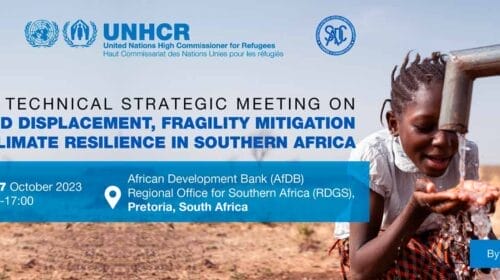The African Development Fund: over 45 years of support to strengthen the continent’s least developed and fragile nations
In 38 of the continent’s most vulnerable countries, the African Development Fund or ADF is enhancing livelihoods by promoting regional integration, fostering businesses and enhancing food security through its investments in power projects, roads and bridges.
ADF’s work and support began over four decades ago. The fund, administered by the African Development Bank, comprises 32 contributing states and benefits 38 countries. ADF-eligible countries include those that are experiencing higher growth rates and heading toward becoming new emerging markets, as well as those that remain fragile and need special support for basic service delivery- the ADF provides support to all of its diversified clients. The Fund’s resources are replenished every three years by its donor countries.
For the ADF-14 period, the replenishment of $7.06 billion, allowed the Fund to continue its strong support to countries under the Bank’s High 5 priorities.
Recognizing the private sector’s key role in the transformation of African economies, the Fund allocated approximately $364 million to the Private Sector Credit Enhancement Facility (PSF). As at the end of November 2019, with approximately $720 million work of risk participations, the PSF has supported approximately $2.5 Billion of NSO lending in LICs.
Between January 2017 and November 2019, 50% of the number of PSF risk participations approved were in the fragile and vulnerable countries- such as Burkina Faso, Liberia, Mozambique, Sudan, Sierra Leone, Chad.
The upcoming fifteenth replenishment covers the period 2020-2022 and will build on successes of the fourteenth replenishment by being more selective and focused.
Fragile states, gender, regional integration
Fragile states will naturally be top of the agenda during the ADF-15 period.
ADF-15 will ensure the application of a fragility lens in all its operations focusing on two Strategic Pillars. Pillar I focuses on investing in quality and sustainable infrastructure, while Pillar II is on human capacity development, to support inclusive growth. During this new three-year cycle, the Fund will support Africa’s most vulnerable countries by tackling the root causes of fragility and mainstreaming cross-cutting issues of gender, climate change and governance.
Despite Africa’s economic growth prospects, inequalities remain. Gains in education and economic opportunities over the past few decades, have still not resulted in gender parity.
The centrality of women in African economies is well recognized and closing the gender gap will be key as not only a rights issue, but a smart economic choice.
Gender equality will remain a cross cutting theme in ADF 15 and will build on the progress made in the previous replenishments. Gender mainstreaming under ADF-15 will be in line with best practices and a new gender equality strategy developed to set out the Bank Group’s goals for promoting gender equality and women’s empowerment.
ADF-sponsored projects have improved transportation, linked countries and increased market access for millions, helping to address the challenges that have hampered intra-African trade: poor infrastructure, tariff and non-tariff barriers, visa regimes and lack of connectivity.
One example of this is the rehabilitation of the Ouagadougou-Lome corridor, which has opened traffic for landlocked Burkina and enabled it to access the port city of Togo. The road also connects Mali and Niger, also land-locked, with the port of Lomé.
Achievements over the last 45 years:





